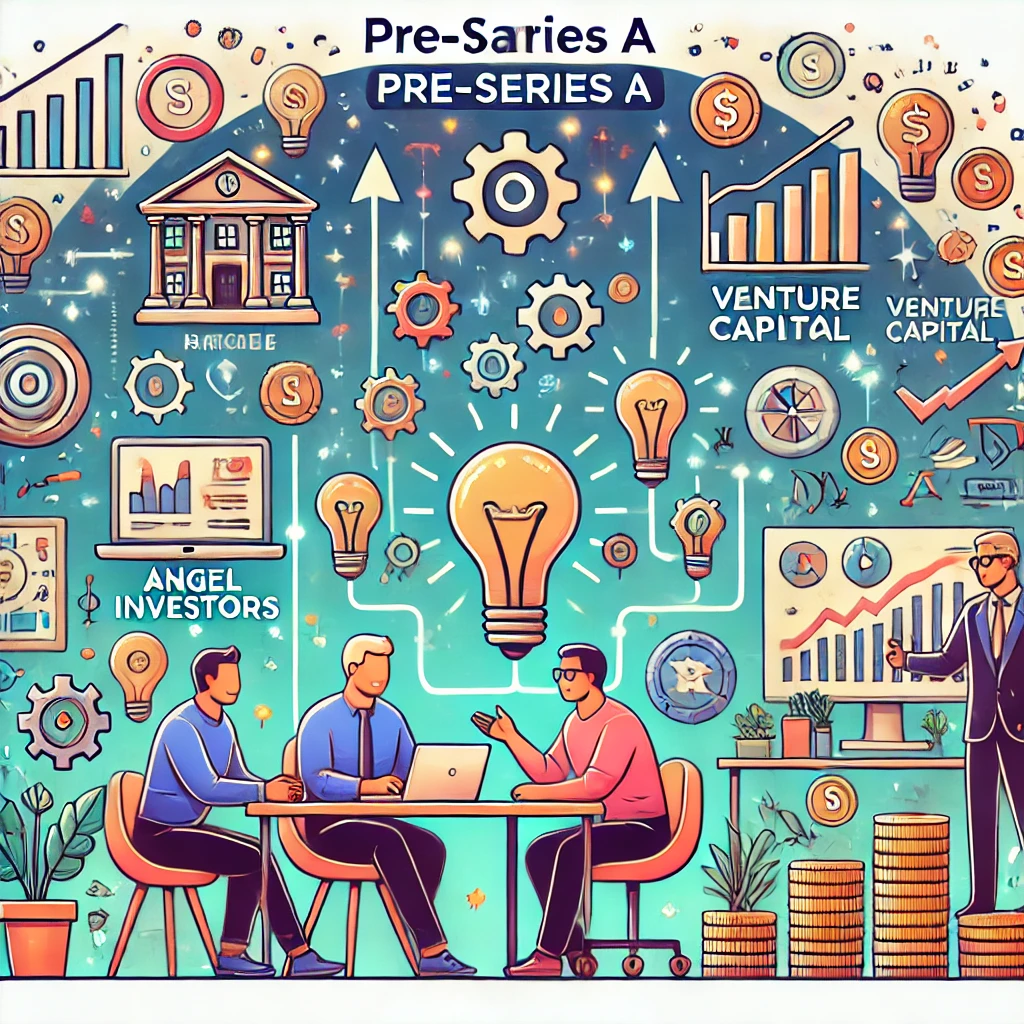Understanding How Pre-Series A Funding Works: A Guide for Startups
Navigating the world of startup funding can be challenging, especially with the array of funding stages available. Pre-Series A funding, often simply called “pre-seed” or “seed” funding, is an essential step in a startup’s journey toward growth and product-market fit. This guide explains how pre-Series A funding works, why it’s crucial for early-stage startups, and what founders need to know about securing this type of financing.
What is Pre-Series A Funding?
Pre-Series A funding is an initial round of investment aimed at helping startups develop their product, build a team, and begin testing market viability before raising larger amounts in a Series A round.
- Stage in Funding Timeline: Pre-Series A is generally one of the first rounds of funding, following initial self-funding or contributions from friends and family.
- Funding Size: Typically, pre-Series A funding amounts range from $100,000 to $2 million, depending on the startup’s location, industry, and potential.
- Investor Types: Investors for this round may include angel investors, early-stage venture capital (VC) firms, and startup incubators or accelerators.
Why Pre-Series A Funding Matters
Early-stage funding provides startups with the resources they need to refine their product, conduct market research, and demonstrate a promising business model.
- Product Development: Funds help startups improve their core product or service, turning ideas into prototypes or beta versions.
- Team Building: The initial investment allows startups to recruit essential team members, often focusing on product development, marketing, and customer acquisition roles.
- Proof of Concept: This stage helps startups gather critical data on customer needs, allowing them to validate their business model before seeking larger funding.
Sources of Pre-Series A Funding
Startups can explore various funding options at this stage. Here are some common sources:
1. Angel Investors
- Individuals who invest their personal funds in startups, often in exchange for equity.
- Angels bring both capital and, potentially, valuable industry experience and networking connections.
2. Seed Funds or Early-Stage VCs
- Venture capital firms dedicated to early-stage investments provide structured funding.
- Seed VCs may also offer mentorship and business support alongside funding.
3. Accelerators and Incubators
- These programs offer mentorship, workspace, and small amounts of capital in exchange for equity.
- Programs like Y Combinator and Techstars help startups gain visibility and build connections with investors.
4. Crowdfunding
- Startups may raise funds through crowdfunding platforms like Kickstarter or Indiegogo.
- This approach helps gauge market interest and secure initial funding without giving up equity.
How Startups Use Pre-Series A Funding
The allocation of pre-Series A funds is critical to setting the foundation for long-term success. Startups typically focus on:
- Product Development and Testing: Enhancing the product, testing in small markets, and refining features based on feedback.
- Market Research: Conducting surveys, focus groups, and pilot launches to understand customer preferences and demands.
- Hiring Key Talent: Recruiting developers, marketing specialists, and other essential team members to propel growth.
- Marketing and Customer Acquisition: Initial advertising, social media, and partnerships to attract early adopters and establish brand presence.
What Investors Look for in Pre-Series A Startups
Investors at this stage are primarily interested in the startup’s potential to scale and generate returns. Here are key factors they consider:
- Strong Founding Team: A knowledgeable, resilient, and passionate team often ranks high on investors‘ priority lists.
- Clear Problem-Solution Fit: The product should address a significant problem in a unique, compelling way.
- Market Potential: Investors seek industries with high growth potential and sizable markets to maximize returns.
- Initial Traction: Startups with early customers, positive user feedback, or promising pilot results stand out.
Challenges of Securing Pre-Series A Funding
While pre-Series A funding can accelerate growth, it is also one of the hardest rounds to secure. Some common challenges include:
- Limited Track Record: Startups often lack substantial financial records or traction, making it harder to attract investors.
- High Competition: Many startups compete for early-stage funding, especially in popular sectors like tech and biotech.
- Complex Valuation: Setting a fair valuation is challenging at this stage, as startups have limited financial history and unclear future revenue.
Tips for Securing Pre-Series A Funding
Here are some strategies to improve your chances of attracting pre-Series A investors:
- Develop a Strong Pitch: Clearly outline your problem, solution, market, and unique selling points.
- Focus on Networking: Attend industry events, join startup communities, and leverage social networks like LinkedIn to connect with investors.
- Show Traction: Demonstrate any initial success—user sign-ups, beta testing results, or strategic partnerships.
- Refine Financial Projections: Investors want to see clear, achievable revenue forecasts and a sensible use of funds.
Preparing for Series A: The Next Step
Pre-Series A funding helps lay the groundwork for future rounds. Once startups demonstrate product-market fit, consistent growth, and solid traction, they can aim to secure Series A funding to scale further.
Key Focus Areas for Series A Preparation:
- Scalability: Ensure that your product and business model can grow without excessive incremental costs.
- Revenue Generation: Show a clear path to revenue or profitability.
- Customer Base Expansion: Expand customer acquisition efforts to show market demand.
Conclusion
Pre-Series A funding is a vital step for early-stage startups as they work toward product-market fit and scaling potential. By leveraging resources from angel investors, early-stage VCs, and accelerators, startups can set the stage for future growth and more substantial funding rounds. For founders, understanding how pre-Series A works and strategically planning for it can make all the difference in a startup’s journey to success.
Source: Investopedia


















